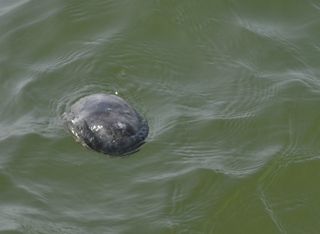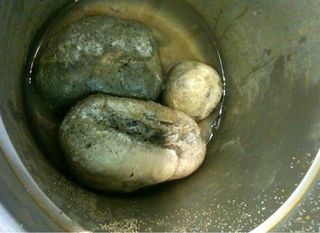
Mystery of Hurricane Irene's Gross Gray Blobs Solved

When Hurricane Irene barreled up the U.S. Eastern coastline, the storm left behind a path of widespread damage — and a generous helping of mysterious, squishy gray blobs in shallow waters and beaches from Virginia to New York, according to news reports.
"They’re pretty disgusting looking," Cathy Hopkins of Hampton, Va., told local media outlet the Daily Press.
Hopkins spotted dozens of the nasty floating blobs — many of which give off a powerful stench — near the mouth of the Poquoson River, off the Chesapeake Bay.
So what are these strange invaders?
"They're potato sponges," said Emmett Duffy, a professor at the Virginia Institute of Marine Science, in a statement.
The institution has been inundated with queries about the blobs, which have been described as being of "various sizes," with the smallest "around the size of a baseball." Reports of their texture range from "kind of rubbery or leathery" to "kind of soft."

Unlike their tuber namesakes, potato sponges are animals. The simple invertebrates usually remain out of sight beneath the waves, anchored to the seafloor. The unobtrusive filter-feeders, which can grow to the size of a soccer ball, inhabit shallow coastal habitats around the world.
Sign up for the Live Science daily newsletter now
Get the world’s most fascinating discoveries delivered straight to your inbox.
Stormy weather can churn up the ocean waters where potato sponges dwell, dislodging them from the seafloor and unleashing a flood of dying or dead sponges — hence the foul smells — onto an unsuspecting coastal population.
Although a plague of sponges doesn't always follow a big storm, it has happened in the past. Hundreds washed ashore in Virginia after Tropical Storm Hanna in 2008, the Daily Press reported.
Most Popular


